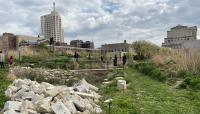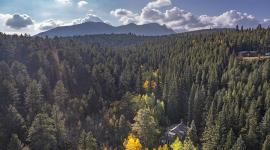Landscape Information
Located within the historic African American cultural corridor of Milwaukee, this neighborhood comprises about 30 blocks, bordered by Locust and Walnut Streets to the north and south and 12th and 20th Streets to the east and west. The area was first an agrarian settlement populated by several large farms, including one owned by politician and abolitionist Samuel Brown. In 1842, sixteen-year-old Caroline Quarlls escaped enslavement on a plantation in St. Louis and sought shelter at Samuel Brown’s farm before venturing to freedom in Canada, becoming the first documented person to pass through this stop on what would become known as the Underground Railroad. The neighborhood became a center of the city’s Black community at the start of the twentieth century, as the adjacent Bronzeville neighborhood’s bustling commercial and nightlife corridor attracted Black residents to settle nearby. In the 1990s, the residential district to the west of Bronzeville was officially designated Lindsay Heights in honor of community activist Bernice Lindsay. The neighborhood features homes in Victorian, Queen Anne, and American Foursquare styles dating from the mid-19th to early twentieth centuries. In the 1960s, urban renewal efforts and the construction of Interstate 43 and Park West Freeway forced over 8,000 homeowners and businesses to sell or vacate their properties. After plans for the Park West Freeway were abandoned in 1969, numerous sites were left vacant. In the intervening decades, vacant sites of all sizes throughout the neighborhood have been reclaimed by community members as orchards, gardens, and open green space. Johnsons Park, the only publicly-accessible green space, measuring slightly more than eleven acres near the historic Underground Railroad site, features multi-use athletic fields bisected by accessible walking paths. Adjacent to the park, Alice’s Garden maintains rows of seasonal vegetables and cut flowers and offers community education on horticulture and regenerative farming.















